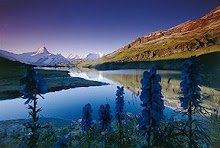

Ecotourism, the travel and trend with contacts to nature, has been noted and advocated in Japan. It is one of the outgrowth that enable people to preserve their local cultural heritage and put emphasis on environment, even revitalize themselves.
In Japan, dolphin-and whale-watching tours are the most common activities involved with ecotourism. In general, it may be hard for us to approach dolphins nearer than 300 meters. Nevertheless, the desire to contact dolphins can be come true in the one of Japanese islands, called Tsuji, which is in Kumamoto Prefecture.
In 1993, the association in Yakushima in charge of some activities has found and there were approximately 6000 participants expecting to go here. The activities include canyoning(canyoneer), snorkeling and forest walks.
In 1993, the association in Yakushima in charge of some activities has found and there were approximately 6000 participants expecting to go here. The activities include canyoning(canyoneer), snorkeling and forest walks.
Another hand in Japan, Iriomote's main activity has been hoped to be changed by its local citzens: from sightseeing to ecotourism, for there have been more and more mangrove trees and other natural features. The oversea ecotourism in Japan is Belug-watching excursion to as Arctic Circle bay; each summer there will be about 3,000 white whales gather there.
Next, the Japanese ministry is dedicated to developing agriculture, forestry, fishing operations and the construction of sightseeing facilities. All of the above-mentioned items bring participants into nature, environments and travel, and the price is ideal: the travel ticket is low-priced.
However, the only flaw for Japan to develope ecotourism is it lack of mechanism, which is involved with environmental impacts. So far, national and local governments are attempting to improve...
http:web-japan.org/trends98/honbun/ntj970918.html
1. canyoning: (it is known as canyoneering in the U.S) Canyoning is traveling in canyons using a variety of techniques that may include walking, scrambling, climbing, jumping, abseiling, and swimming.
2. snorkeling: it is the practice of swimming on or through a body of water while equipped with a diving mask, a shaped tube called a snorkel, and usually swimfins. In cooler waters, a wetsuit may also be worn. Using this equipment allows the snorkeler to observe under water attractions for extended periods of time with relatively little effort.
3. prefecture: it indicates the office seat territorial circumscription of a Prefect. The term prefecture is also used to refer to offices analogous to prefectures. In reference to Japanese system of administrative subdivisions, prefecture is used as the translation for todofuken. The system of local government in Japan consists of two classes: prefectures as the large-area local governing units, and municipalities as the basic local-level governing units.
4. beluga: it is an Arctic and sub-Arctic species of cetacean. It is one of two members of the family Monodontidae, along with the Narwhal.








No comments:
Post a Comment